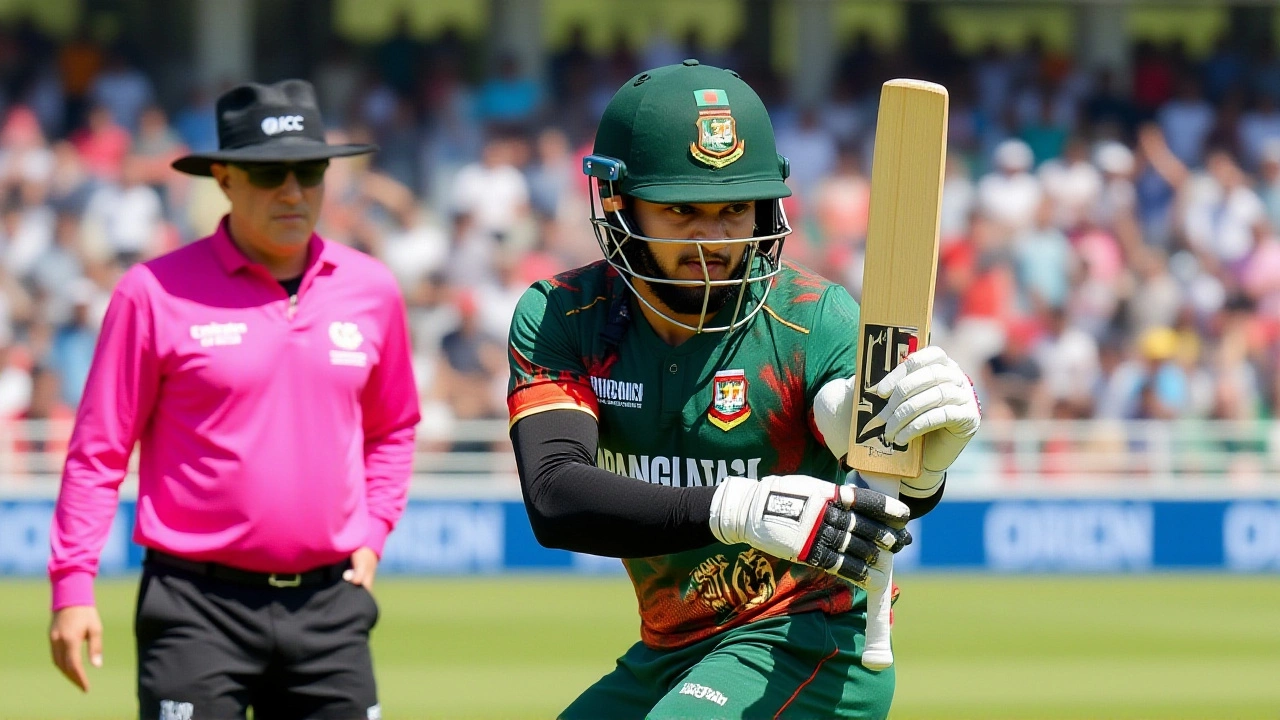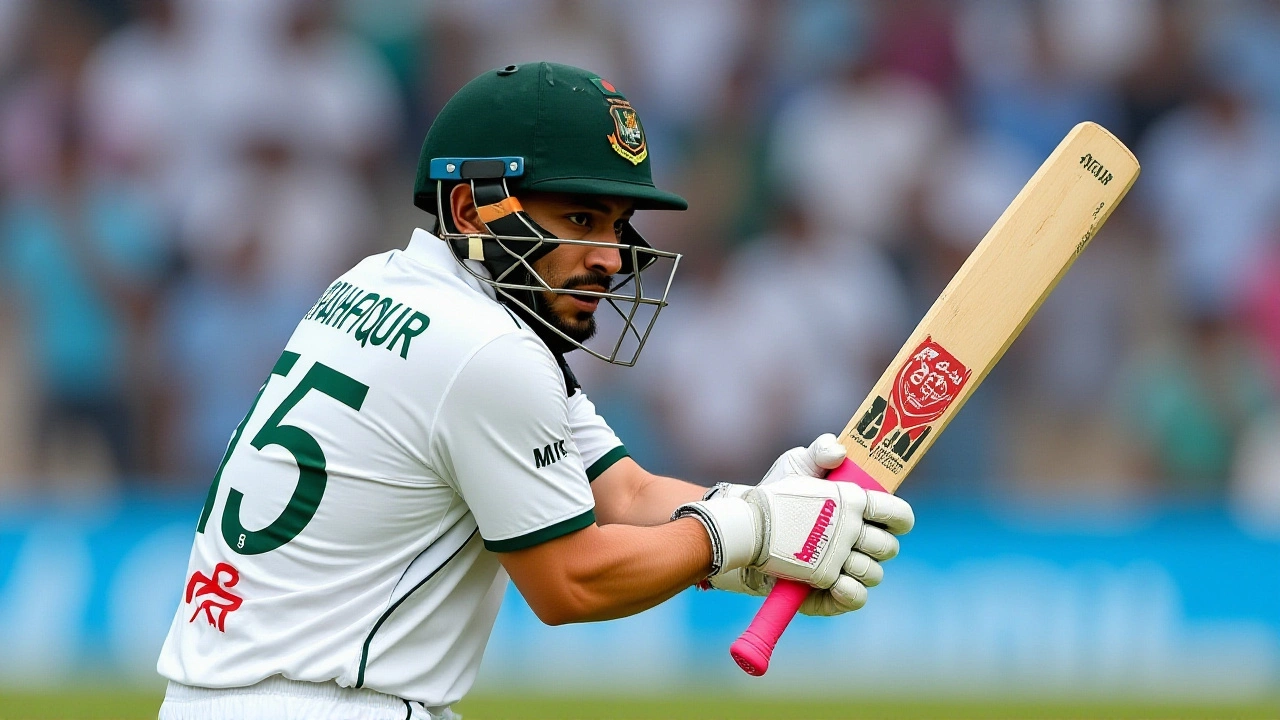Mushfiqur Rahim breaks world record with 15,509 runs, surpassing Gilchrist in Test milestone
On June 17, 2025, at the Galle International Stadium in Sri Lanka, Mushfiqur Rahim didn’t just score a century—he rewrote history. The 38-year-old Bangladesh wicketkeeper-batsman reached 159 not out in the first innings of the opening Test against Sri Lanka, pushing his international career total to 15,509 runs across Tests, ODIs, and T20Is. That number eclipsed the previous record held by Australia’s Adam Gilchrist (15,461 runs), making Rahim the first player in cricket history to amass more runs in international cricket without ever bowling a single delivery. The milestone came on his 100th Test appearance, placing him among cricket’s rarest elite—only the 11th player ever to score a century in his centenary Test.
A Record-Breaking Day in Galle
The rain-delayed innings was more than just personal glory. Rahim shared a 264-run partnership with Bangladesh captain Najmul Hossain Shanto for the fourth wicket—the highest ever by a visiting team in Test cricket in Sri Lanka. It was a masterclass in patience and precision, with Rahim anchoring the innings while Shanto accelerated. Sri Lanka, playing their legendary all-rounder Angelo Mathews in his final Test, watched as Rahim overtook him on the all-time international runs list. Mathews, who had finished his career with 15,499 runs, stood at the crease just hours before being bowled for 12, his final Test dismissal.
What made this even more remarkable? Rahim did it without ever picking up a ball to bowl. In an era where all-rounders dominate the stats, he’s the ultimate specialist: a wicketkeeper who bats like a top-order anchor. His record stands ahead of other elite non-bowlers like Quinton de Kock (12,654 runs) and Jos Buttler (11,881). The numbers don’t lie—he’s the only Bangladeshi to cross 6,000 Test runs with a career average of 38.02, second only to Tamim Iqbal among Bangladesh’s 18 1,000-run Test batsmen.
Legacy Beyond the Numbers
Rahim’s achievements stretch far beyond this single innings. He is the first—and still only—wicketkeeper-batsman in Test history to score two double-centuries. He became the first Bangladeshi to reach three Test double-hundreds, with his 219* against Zimbabwe in 2018 still the highest individual score by a Bangladeshi in Test cricket. His 200 against Sri Lanka in Galle back in 2013 was the first-ever double-century by a Bangladesh batter in Test cricket. Two years later, he followed it up with 203 against Zimbabwe, joining an exclusive club of only three batters in history to score three or more double-hundreds while batting at number five or lower.
He’s also held the Bangladesh record for most Tests as captain (34) and most Tests as wicketkeeper (55). The fact that he’s combined both roles in 28 matches—second only to MS Dhoni—is a testament to his endurance and leadership. Seven Player-of-the-Match awards in Tests, three of them away from home, underline his consistency under pressure. And then there’s the 150 international match wins—no other Bangladeshi has reached that mark.
Even his quirks are historic. In December 2023, he became only the second player since Len Hutton in 1951 to be dismissed for obstructing the field—after using his gloves to stop a ball from hitting the stumps. It was a moment of controversy, but also a reminder: Rahim plays with instinct, not just technique.
From Teen Prodigy to National Icon
Rahim’s journey began at 18, when he became the second-youngest player after Sachin Tendulkar to play a Test at Lord’s in 2005. He was already a wicketkeeper with a batting style that defied expectations—calm under pressure, technically sound, and mentally unshakeable. Former Bangladesh coach Jamie Siddons once said, "He can bat anywhere in the top order. He’s one of the most consistent players I’ve ever worked with." That’s not flattery—it’s fact. Of his 12 Test centuries, 10 came in the first innings. His average in those situations? 45.77. He’s the only keeper in cricket history to have scored over 1,000 runs in all three formats.
Domestically, he’s no less dominant. Representing Rajshahi Division, he’s piled up over 6,500 first-class runs, including 34 centuries. He’s not just a national hero—he’s a franchise cornerstone, a mentor to younger keepers, and a symbol of Bangladesh’s rise from cricketing underdogs to respected Test contenders.

What Comes Next?
Sri Lanka, desperate to give Mathews a winning farewell, fought back after the rain interruption, but the momentum clearly belonged to Bangladesh. With Rahim still at the crease and the tail wagging, the visitors were well placed to post a massive total. The match, now in its third day, has shifted from a farewell for Mathews to a coronation for Rahim.
At 38, with no signs of slowing, he could still add more runs. He’s not chasing records for the sake of it—he’s chasing excellence. And with every run, he’s redefining what it means to be a wicketkeeper in modern cricket.
Frequently Asked Questions
How does Mushfiqur Rahim’s record compare to other non-bowling batsmen in international cricket?
Rahim’s 15,509 international runs now stand as the highest by any player who has never bowled in official internationals. He surpasses Adam Gilchrist (15,461), Quinton de Kock (12,654), and Jos Buttler (11,881). Even among pure batsmen like Jacques Kallis (who bowled 1,280 overs), Rahim’s feat is unique—he never bowled a ball in any format, making his run tally the most by a specialist non-bowler in history.
Why is scoring a century in your 100th Test so rare?
Only 11 cricketers in history have scored a century in their 100th Test. The last was India’s Cheteshwar Pujara in 2022. It’s rare because players often retire before reaching the milestone, or their form declines. Rahim’s ability to peak at 38, after 18 years at the top, speaks to his fitness, technique, and mental discipline—qualities few maintain over such a long career.
What makes Rahim different from other wicketkeeper-batsmen like Gilchrist or Dhoni?
While Gilchrist was explosive and Dhoni was a finisher, Rahim is the ultimate anchor. He’s the only keeper to score three Test double-centuries and the only one to bat at number five or lower and do it so consistently. His 55 Test dismissals as keeper are a Bangladesh record, and he’s the only keeper in history to captain his side in over 25 Tests while keeping wickets. His game is built on endurance, not flash.
Has any other Bangladeshi player come close to Rahim’s achievements?
No. Tamim Iqbal has more Test runs (7,685) and a slightly higher average, but Rahim leads in total international runs, Test centuries (12), and dismissals behind the stumps. He’s also the only Bangladeshi with 150 international match wins and the only one to score three Test double-centuries. His combination of longevity, consistency, and leadership is unmatched in Bangladesh cricket history.
What impact does this record have on Bangladesh cricket’s global standing?
Rahim’s record elevates Bangladesh from being seen as an emerging side to a nation producing world-class specialists. His consistency in overseas conditions—especially in Sri Lanka, where he’s scored two double-centuries—challenges the notion that Asian teams struggle away from home. He’s a blueprint for future players: technical, disciplined, and mentally resilient. His legacy isn’t just runs—it’s proof that Bangladesh can produce global icons.
Will Rahim continue playing after this milestone?
He hasn’t announced retirement, and at 38, he’s still performing at the highest level. His fitness regimen, disciplined technique, and love for the game suggest he could play into 2026, especially if Bangladesh qualifies for the 2027 World Test Championship final. With 100 Tests under his belt, he may focus on Tests only, letting younger keepers handle ODIs and T20Is. But for now, he’s still the man Bangladesh relies on when the chips are down.





